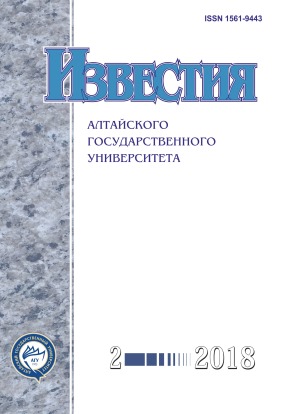Special Aspects of the Organization and the Activity of the Institute of Justices of the Peace in the Steppe Region at the End of the 19th - the Beginning of the 20th Centuries
Downloads
Metrics
References
Биюшкина Н.И. Некоторые практические проблемы внедрения мирового суда в российскую правовую действительность (пореформенный период XIX в.) // Вестник Нижегородского университета им. Н.И. Лобачевского. Серия: Право. — 2000. — № 1.
Деревскова В.М. Судебная система Сибири во второй половине XIX века: сравнительный анализ общеимперских и региональных начал // Сибирский юридический вестник. — 2011. — № 3.
Васин К.Л. Административные и судебные реформы 60–90-х гг. XIX в. в Степных областях Западной Сибири (Акмолинской, Семипалатинской и Семиреченской) : автореф. дис. … канд. ист. наук. — Омск, 2008.
Глазунов Д.А. Подготовка судебной реформы 1898 г. в Степном генерал-губернаторстве // Социально-экономические и этнокультурные процессы в Верхнем Прииртышье в XVII–XX веках : сборник материалов международной научной конференции. — Новосибирск, 2011.
[Электронный ресурс]. URL: http://sibistorik.narod.ru/
project/conf2010/029-glazunov.htm.
Анисимова И.В. Вопрос об эффективности реформирования традиционной судебной системы казахского общества (80–90-е гг. XIX в.) // Известия Алтайского гос. ун-та. — 2013. — № 4/2 (80).
Лысенко Ю.А., Анисимова И.В., Тарасова Е.В. и др. Традиционное казахское общество в национальной политике Российской империи: концептуальные основы и механизмы реализация (XVIII — начало ХХ в.). — Барнаул, 2014.
Лысенко Ю.А. Социально-политическое движение в центральноазиатских окраинах Российской империи накануне революций 1917 г. // Известия Алтайского гос. ун-та. — 2016. — № 2 (90).
Lysenko Yuliya A. The Representatives of the Steppe Region and Turkestan in the Russian Parliament: the Experience of Fractional Interaction in Solving Regional Ethno-Social Problems // Bylye Gody. — 2017. — Vol. 44. Is. 2.
Положение об управлении Туркестанского края 1886 г. [Электронный ресурс]. URL: http://www.hrono.ru/dokum/turkestan1892.html.
Российский государственный исторический архив (РГИА). — Ф. 1405. — Оп. 100. — Д. 552. 1891–1898 гг.
Собрание узаконений и распоряжений правительства. 1895 г. Второе полугодие. СПб., 1896.
Центральный государственный архив Республики Казахстан. Ф. 64. Оп. 1. Д. 727.
РГИА. — Ф. 1291. — Оп. 84. — Д. 116-1909.
Собрание узаконений и распоряжений правительства. 1898 г. Первое полугодие. СПб., 1898.
Собрание узаконений и распоряжений правительства. 1904 г. Первое полугодие. СПб., 1904.
Copyright (c) 2018 И.В. Анисимова, Ю.А. Лысенко

This work is licensed under a Creative Commons Attribution 4.0 International License.
Izvestiya of Altai State University is a golden publisher, as we allow self-archiving, but most importantly we are fully transparent about your rights.
Authors may present and discuss their findings ahead of publication: at biological or scientific conferences, on preprint servers, in public databases, and in blogs, wikis, tweets, and other informal communication channels.
Izvestiya of Altai State University allows authors to deposit manuscripts (currently under review or those for intended submission to Izvestiya of Altai State University) in non-commercial, pre-print servers such as ArXiv.
Authors who publish with this journal agree to the following terms:
- Authors retain copyright and grant the journal right of first publication with the work simultaneously licensed under a Creative Commons Attribution License (CC BY 4.0) that allows others to share the work with an acknowledgement of the work's authorship and initial publication in this journal.
- Authors are able to enter into separate, additional contractual arrangements for the non-exclusive distribution of the journal's published version of the work (e.g., post it to an institutional repository or publish it in a book), with an acknowledgement of its initial publication in this journal.
- Authors are permitted and encouraged to post their work online (e.g., in institutional repositories or on their website) prior to and during the submission process, as it can lead to productive exchanges, as well as earlier and greater citation of published work (See The Effect of Open Access).








